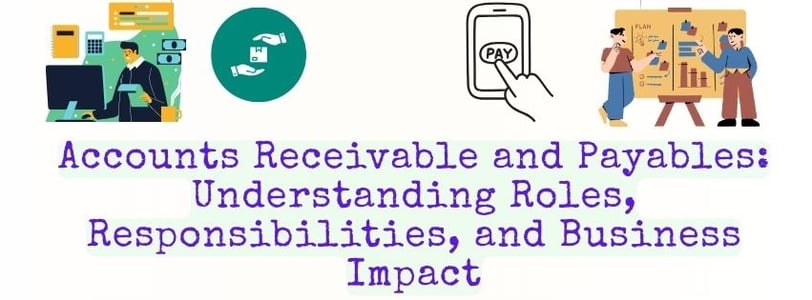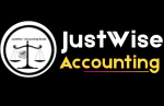Best Practices for Handling Accounts Receivable and Payables Efficiently
Justwise -Accounting
3 min read


Understanding Accounts Receivable and Accounts Payables: A Guide for Business Owners
What Are Accounts Receivable and Accounts Payable?
Accounts receivable and accounts payable are critical components of business finance, impacting cash flow, financial stability, and operations.
Accounts Receivable – Represents money owed to your business by customers for goods or services purchased on credit. This is considered an asset because it reflects expected incoming cash.
Accounts Payable – Represents money your business owes to suppliers or vendors for goods or services purchased on credit. This is considered a liability because it reflects financial obligations that must be paid.
Who Is Responsible for Managing These Accounts?
The responsibility for managing accounts receivable and payables varies depending on business size, structure, and financial processes.
Business Owners – In small businesses, owners often manage both receivables and payables themselves.
Bookkeepers – Handle transaction recording, ledger entries, financial reports, and aging summaries but do not manage payments, collections, or approvals.
Accounts Receivable/Payable Specialists – In larger businesses, dedicated professionals oversee payment processing and debt collection.
The Role and Limitations of a Bookkeeper in Managing Receivables and Payables
While bookkeepers play a key role in tracking financial transactions, their responsibilities do not extend to financial decision-making, collections, or managing payments.
Bookkeeper Responsibilities
Recording invoices and payments in the ledger
Generating financial reports, including aging summaries
Tracking overdue payments and updating financial records
Bookkeeper Limitations
Cannot approve payments or negotiate debt collection
Not responsible for authorizing bank transactions unless explicitly permitted
Does not handle supplier disputes or customer payment collections
If outsourcing bookkeeping, responsibilities are defined in the bookkeeping plan or contract. Business owners may need to:
Work out policies, processes, and costs related to receivables and payables
Grant additional authorization if bookkeepers are expected to handle banking transactions
Adjust bookkeeping fees based on the scope of financial management required
Understanding Aging Summaries and Bad Debts
An aging summary categorizes outstanding invoices based on time elapsed since issuance. It helps businesses track overdue payments and manage financial risks.
Aging Categories for Receivables and Payables
Current (0-30 days) – Recently invoiced payments still within normal terms
Overdue (30-60 days) – Payments requiring follow-up or reminders
Non-Performing Assets (NPA) (60+ days) – High-risk unpaid invoices potentially turning into bad debts
When accounts receivable remain unpaid beyond a set period, they may be classified as bad debts, requiring a different recovery process.
Debt Recovery vs. Bookkeeping: Understanding the Difference
Bookkeeping focuses on recording transactions and generating reports, while debt recovery involves active communication and collection strategies. Managing bad debts typically requires:
Legal procedures for recovering overdue payments
Debt collection strategies separate from bookkeeping
Negotiation with customers for payment settlements
Since money is involved, businesses may need to provide additional permissions to bookkeepers if they expect them to handle banking transactions, payments, or collections.
Why Accounts Receivable and Payables Are Not Solely a Bookkeeper’s Role
Accounts payable and receivable involve financial decision-making, troubleshooting, and supplier/customer negotiations. While bookkeepers record transactions, they do not:
Handle disputes with vendors or customers
Negotiate payment terms or debt recovery
Authorize payments or collections
Challenges Businesses Face in Accounts Payable Management
Managing accounts payable efficiently requires addressing key challenges:
Manual processing inefficiencies – Paper-based systems increase errors and slow down approvals
Payment fraud risks – Digital security measures must be in place to prevent fraud
Data management issues – Inconsistent tracking leads to discrepancies in financial records
Vendor relationship challenges – Late payments can damage supplier trust and future contract terms
Lack of automation – Manual processes increase workload and reduce efficiency in financial operations
Businesses often outsource accounts payable processes to improve efficiency and ensure compliance.
Final Thoughts: Why Managing Receivables and Payables Matters
Proper management of accounts receivable and payables is essential for financial stability. It ensures:
Stable cash flow for business operations
Accurate financial reporting for tax and compliance purposes
Stronger business relationships with customers and suppliers
For businesses looking to streamline financial processes, working with a professional accountant or bookkeeper can help optimize accounts receivable and payable management while ensuring compliance.
"If you need assistance with setting up a Receivables and Payables or improving your financial processes, consult a professional accountant or bookkeeper for tailored guidance."
Stay in Touch
© 2025 JustWise Accounting. All rights reserved. ABN 85 581 353 385
⚠️ We respect your privacy. Unsubscribe anytime. (under subscribe button)
Serving Australia-wide
Justwise acknowledge the Traditional Owners of the lands where we operate and pay respect to Elders past and present.
